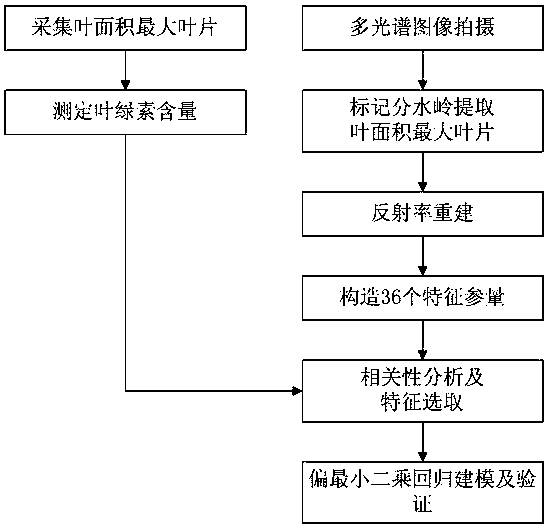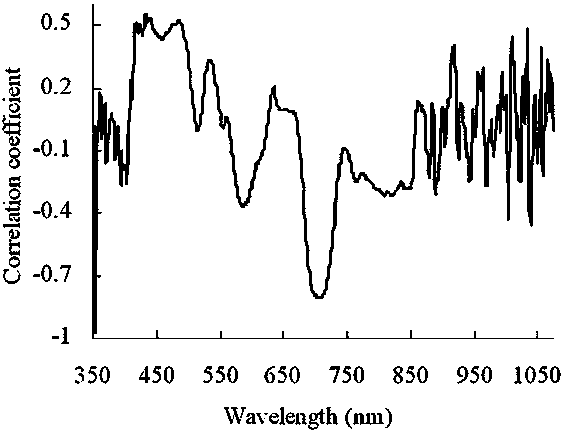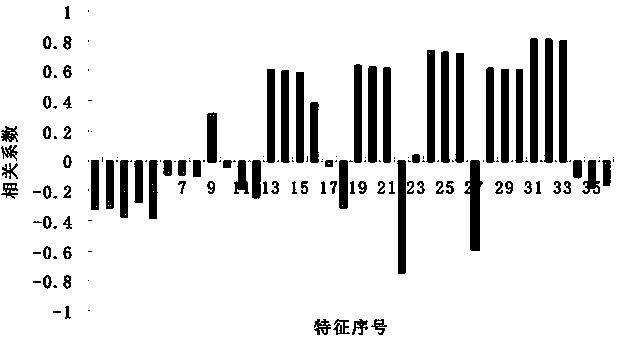Multispectral estimation method of tomato chlorophyll content
A chlorophyll content and multi-spectral technology, applied in the field of crop chlorophyll estimation, to overcome the narrow field of view and solve the effect of image quality degradation
- Summary
- Abstract
- Description
- Claims
- Application Information
AI Technical Summary
Problems solved by technology
Method used
Image
Examples
Embodiment Construction
[0026] refer to figure 1 In the flow chart of the steps shown, the embodiment of the present invention provides a multi-spectral estimation method for tomato chlorophyll content, which takes greenhouse tomato as the research object, and acquires multi-spectral images of crop canopies, extracts leaves with the largest leaf area, and uses reflectance. Reconstruction, multispectral image feature definition and selection, partial least squares modeling, and finally a set of tomato chlorophyll content estimation method is proposed, which includes the following specific steps:
[0027] (1) Put the standard emission plate and the leaves in the same field of view, and use the camera to acquire 8 multispectral images in different bands of the crop canopy in the same scene according to the 8 bands that are sensitive to the chlorophyll content of the crop.
[0028] Among them, the eight bands sensitive to the chlorophyll content of crops are 520, 560, 640, 670, 700, 760, 800 and 870nm re...
PUM
 Login to View More
Login to View More Abstract
Description
Claims
Application Information
 Login to View More
Login to View More - Generate Ideas
- Intellectual Property
- Life Sciences
- Materials
- Tech Scout
- Unparalleled Data Quality
- Higher Quality Content
- 60% Fewer Hallucinations
Browse by: Latest US Patents, China's latest patents, Technical Efficacy Thesaurus, Application Domain, Technology Topic, Popular Technical Reports.
© 2025 PatSnap. All rights reserved.Legal|Privacy policy|Modern Slavery Act Transparency Statement|Sitemap|About US| Contact US: help@patsnap.com



